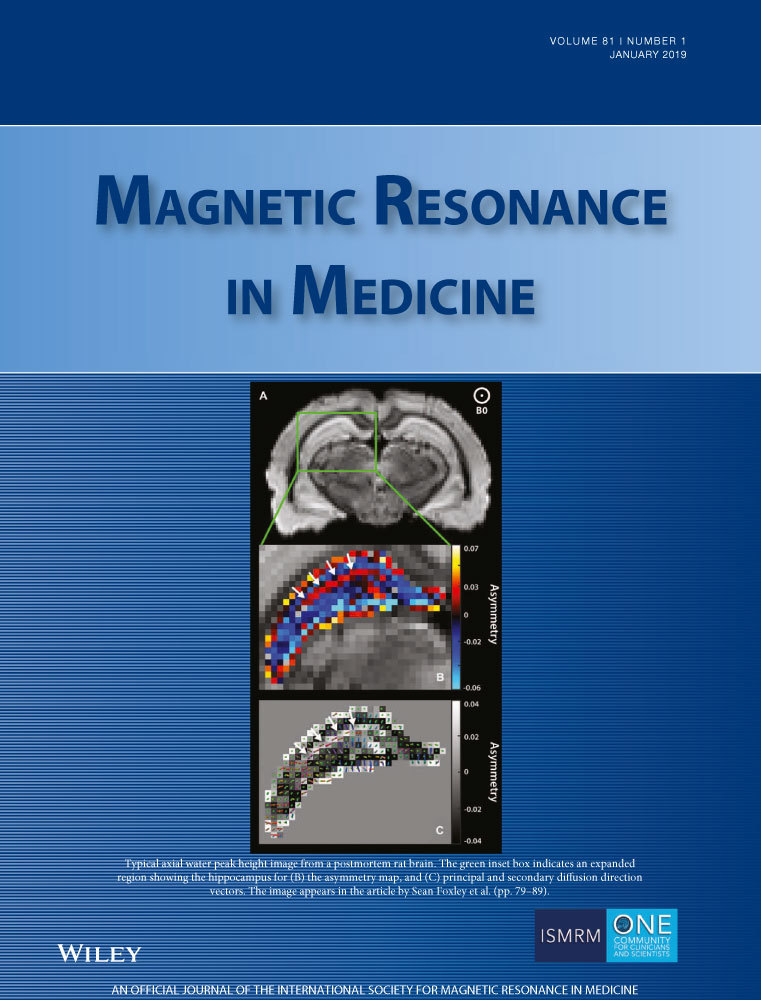Evaluating the accuracy of multicomponent T2 parameters for luminal water imaging of the prostate with acceleration using inner-volume 3D GRASE
Abstract
Purpose
Prostate cancer can be detected using a multicomponent T2 mapping technique termed luminal water imaging. The purpose of this study is twofold: 1) To accelerate the luminal water imaging acquisition by using inner volume selection as part of a gradient and spin echo sequence, and 2) to evaluate the accuracy of luminal water fractions and multicomponent T2 relaxation times.
Methods
The accuracy of parameter estimates was assessed using Monte Carlo simulations, in phantom experiments and in the prostate (in 5 healthy subjects). Two fitting methods, nonnegative least squares and biexponential fitting with stimulated echo correction, were compared.
Results
Results demonstrate that inner volume selection in a gradient and spin echo sequence is effective for accelerating prostate luminal water imaging by at least threefold. Evaluation of the accuracy shows that the estimated luminal water fractions are relatively accurate, but the short- and long-T2 relaxation times should be interpreted with caution in noisy scenarios (SNR < 100) and when the corresponding fractions are small ( < 0.5). The mean luminal water fractions obtained at SNR above 100 are 0.27 ± 0.07 for the peripheral zone for both fitting methods, 0.16 ± 0.04 for the transition zone with nonnegative least squares, and 0.16 ± 0.03 for the transition zone with biexponential fitting including stimulated echo correction.
Conclusion
The shortened scan duration allows the luminal water imaging sequence to be easily integrated into a standard multiparametric prostate MRI protocol.




